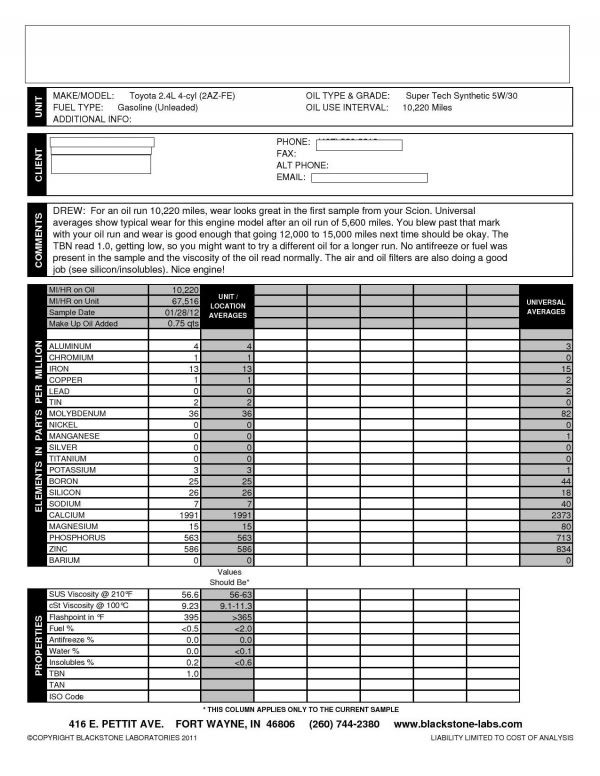This oil run was from 4/11 to 1/12. I drive the vehicle pretty hard. I floor it all the time, and it sees redline at least two to three times daily. On this oil run it has also seen a few street races as well with plenty of times going past 100mph. It saw temps anywhere from 34 degrees to high 90s. I do about 60% highway and 40% city driving. 0.75 quarts of makeup oil was added at about 4800 miles. When i changed the oil, it was right at the minumum line on the dipstick. P1 oil filter used.
Current mods on the vehicle include injen cold air intake with amsoil filter, DME header (cat delete), invidia down pipe, magnaflow cat-back exhaust, agency power lightweight crank pulley.

Current mods on the vehicle include injen cold air intake with amsoil filter, DME header (cat delete), invidia down pipe, magnaflow cat-back exhaust, agency power lightweight crank pulley.

